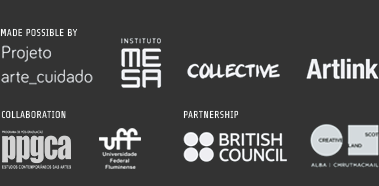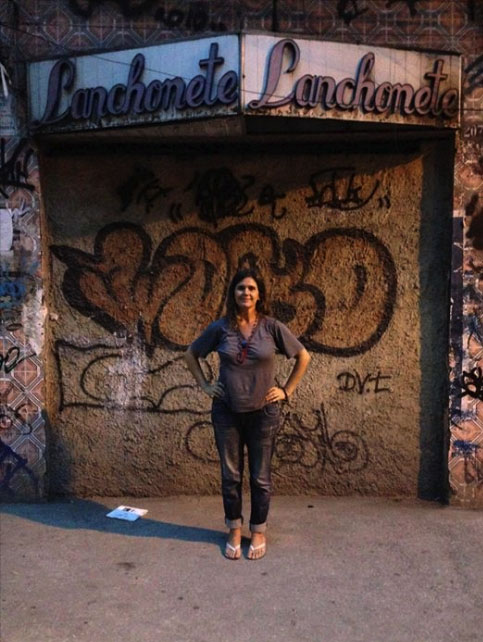
Lanchonete with Thelma Vilas Boas
Ten Months of Celebration: An Introduction to the Christmas Party Video at Lanchonete <> Lanchonete
Thelma Vilas Boas
The party started when the Lanchonete< was not even called >Lanchonete. I felt it and could give examples that might help explain that feeling, but really its definition escapes words.
There was that time I received an invitation from the curator Paula Borghi to rent the garage on the ground floor of the independent art space Saracura to set up my studio. 1 But the fact is I am no longer a studio artist. I am an artist of public things.
In 2016 at Capacete 2, another long-standing independent art space in Rio de Janeiro, I had activated La Boca, which was a relational kitchen.
Then I cooked on the street using piles of leftover construction materials from the “Porto maravilha” [the wonderful port], as the gentrified Rio de Janeiro port area is called, which I transformed into open-air wood stoves. A major port in the trafficking of African slaves, the region’s history and legacy demands redress as it struggles against being subsumed by capital. Hence, this was a truly public kitchen, on the street and in the world. This was the praxis that would become part of the first program of Saracura Art Residencies.3
After months of activations in public space, it seemed to make sense to begin the composition of an open space to the world but one that was also protected from the sun and rain and where there was a working kitchen with tables around which a good conversation could unravel, with books close by, where you could play and listen to music, with pen and paper for anyone who wanted to write or draw, with benches and chairs to sit on, with glasses to drink with, and people to occupy it all. 4
I have always worked with the power of commensality – eating and drinking at the same table – as a means to gather differences and different people around a table with good food, opening the way for dialogue and exchange.
And there in that garage there emerged the image of something to come. I already knew several people from the community, many from the Morro de Providencia favela, street dwellers and some merchants who had not yet participated and were completely unaware of Saracura’s program.
So it was in this context that I accepted to rent the garage and I presented to Paula Borghi, Bianca Bernardo and Cesar Jordão – the three partners of Saracura – a proposal with the following objective: to provoke in the “garage space” the creation of an ongoing spontaneity that would corroborate with the permeability of the Saracura project through being a context for coming closer and listening to the people of the neighborhood, where a vector of more public culture might be found and fostered.
There was no certainty of how this might turn out, as it was necessary to allow the perceived urgencies and demands of the context to, little by little, inform and form the proposal as we experimented.
That’s how the “party” started.
The first day was a great celebration. Raising the garage door of the L<>L was like opening the windows of a house to let the light in, to see the street, to wave at passersby, to breathe and to tell the world: Hello! We’re here! And we see that you are too!!
It was a sunny day and windy, very hot and people were passing by on the sidewalk to and fro. Many noticed the novelty, asked what the place was about, and the movement began naturally.
An open garage door on the ground floor is a portal to the world. It’s like a movie screen projecting a movie in real time, with natural sounds and many parallel scripts. And inside it, like a projection room, there is a place to watch, talk and think about the world.
Various narratives enter into the garage as part of Lanchonete<>Lanchonete; they hang around, leave, come back, last a little while or continue. And the stories about the Lanchonete also go out into the world and intertwine with many others.
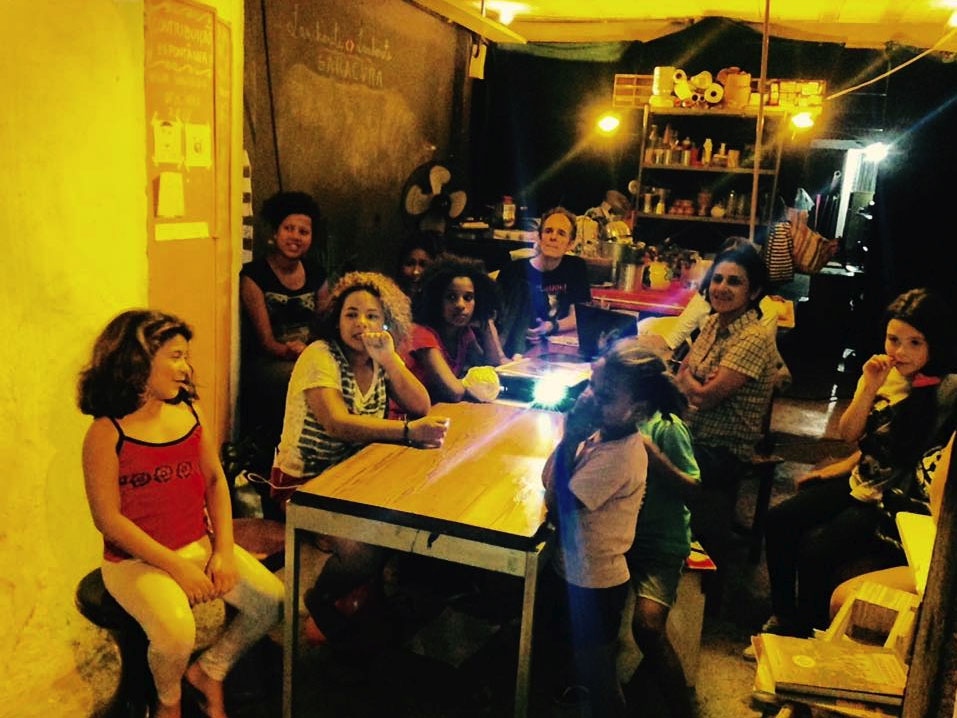
Fig 1. Cafeteria: Watching the movie. Photo: Thelma Vilas Boas
L <> L is a space where many stories take place; it is a place for cooking, conversations and encounters. Happening and composing itself little by little, it is a place spontaneously being shaped by all the people involved and their multiple voices. And the world, choices and priorities set the direction. Constantly composed of many people, via the programming of Saracura, local urgencies and demands, L <> L sensitized its immediate environment, Saracura itself and its managers, affecting people, structures, beliefs, agendas and networks.
Saracura is upstairs and the Lanchonete on the ground floor. Two complementary vectors of culture, recognizing themselves as neighbors aligned in the idea of trying out new propositions and running the risk of opening up to the unknown and to the unpredictable.
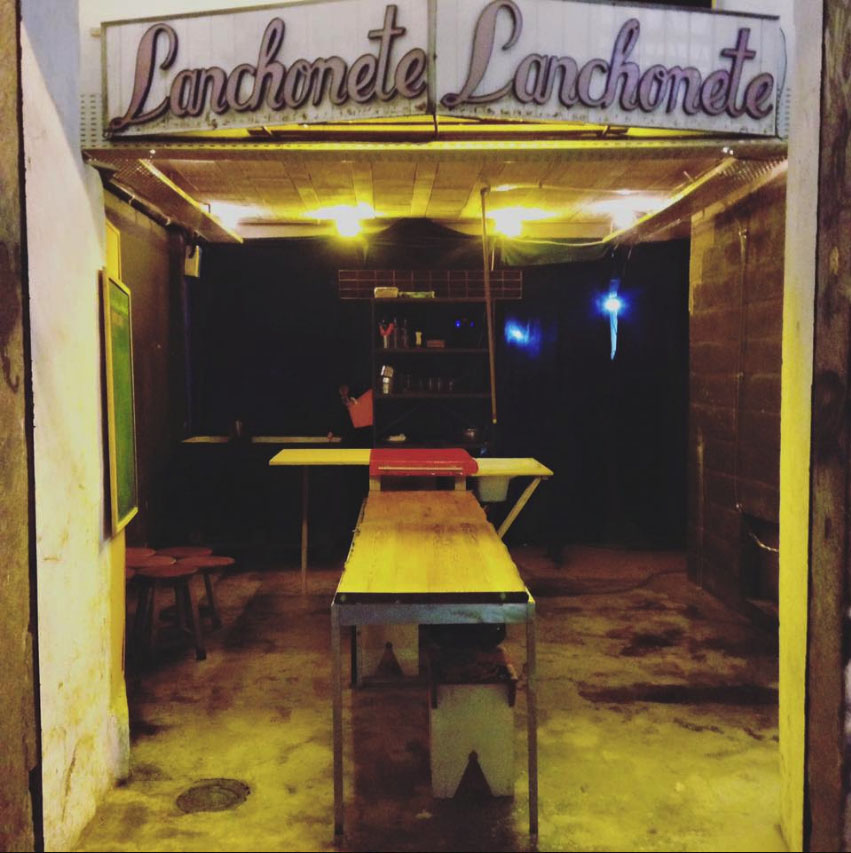
Fig 2. Interior of the Lanchonete. Photo: Thelma Vilas Boas
Lanchonete is an apparatus totally affected by the world, the neighborhood, the current economic and political issues, Saracura and its public, its friends and its routine. It is in a constant movement of affecting and being affected.
The garage was about 35m2 and served as a deposit. When I arrived and started cleaning, I found a large print storage drawer, an iron bookcase, and two aluminum tables with wooden tops that became our furniture. There was also a piece of equipment built by the collective Opavivará that solved the sink and workbench area. I brought benches and stools, others I found in the process. I brought crockery and cutlery, pots and pans. Marine Lévesque lent me an electric stove and Cesar a refrigerator. At last the Lanchonete was up and running with what had been found along the way. The sign was found a few meters from the garage, in a property that had been sealed for many years for sanitary surveillance, it was hanging from the facade as if waiting to fall during some thunderstorm.
It’s incredible that one does not measure the power of a space by its size but rather by its resistance.
From the appearance of Lanchonete<>Lanchonete, starting with the occupation and cleaning of the space, then the assembly of the kitchen with what was at hand using furniture and equipment provided by friends, then the inauguration, followed by the everyday with our doors open with growing community involvement and interested partners, up until our Christmas celebration, it was always a party.
Parties for the right to struggle and for the constant struggle against the silencing of people and the erasure of the facts. Parties to simply sit around the table and dine together with the children and friends of the neighborhood, reconstituting moments of affection, being together with joy, performing some rites and collectively building our affective repertoire.
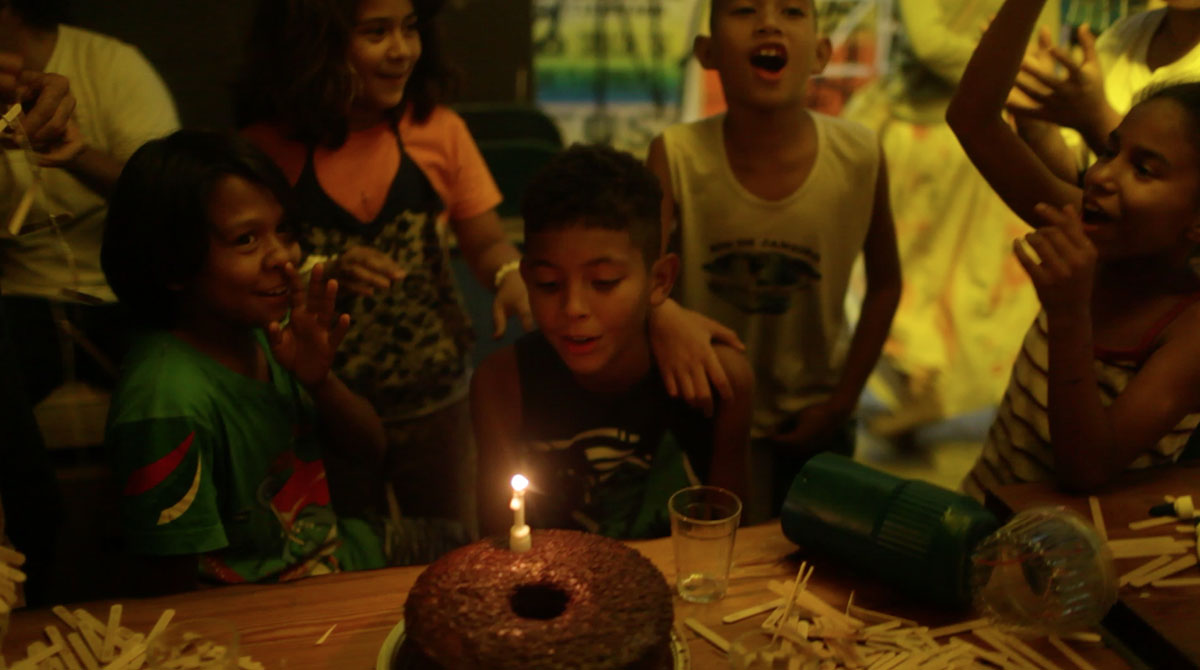
Fig 3. Cafeteria: Party and cake. Photo: Thelma Vilas Boas
There were countless slips, failures, conflicts, and unanswered questions. But the good encounters were more numerous, potent and positively sensitizing all those involved.
During the 10-month celebration, many episodes of tension were part of the ongoing composition of L <> L, ones that questioned its beliefs and forced its walls. There was always a movement of revision and an opening up to thinking and rethinking its format and model. And the preparation of the Christmas Party collaborated for yet another reflection on what L <> L is and what it means for all those involved.
There was a great desire to celebrate our composition as a vector of culture, but mainly as a common space, such as the snack bar of the neighborhood children, the café of friends, supporters, Saracura, our extended families, of the community. Not once did the Lanchonete open and we did not celebrate. So we started planning the Christmas party.
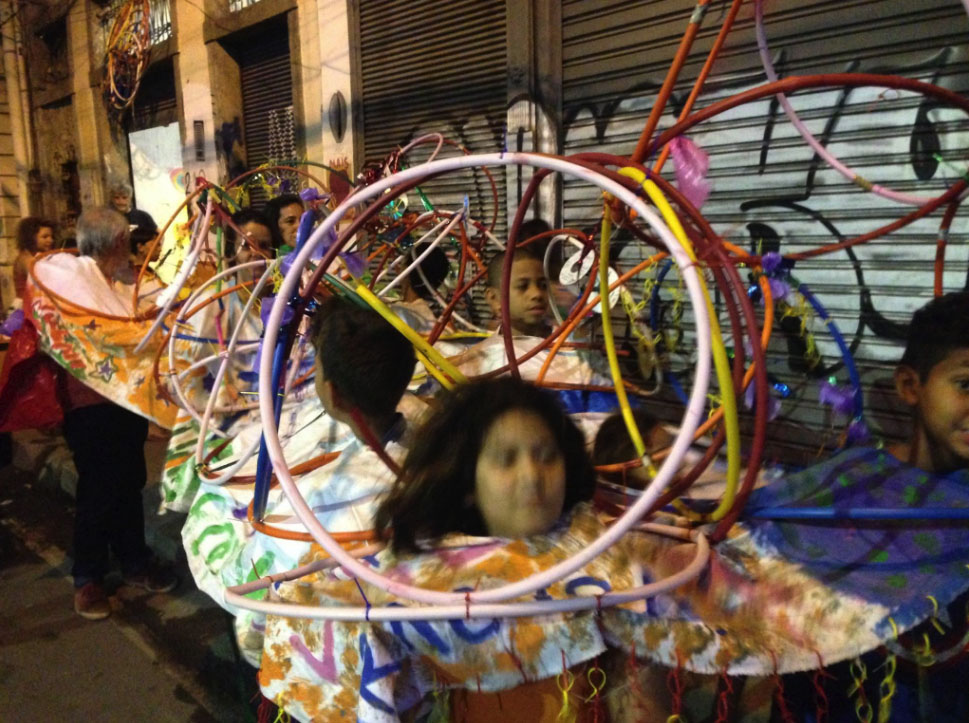
Fig 4. Lanchonete: Activity with artists Marcos Cardoso and Edmilson Nunes. Photo: Thelma Vilas Boas
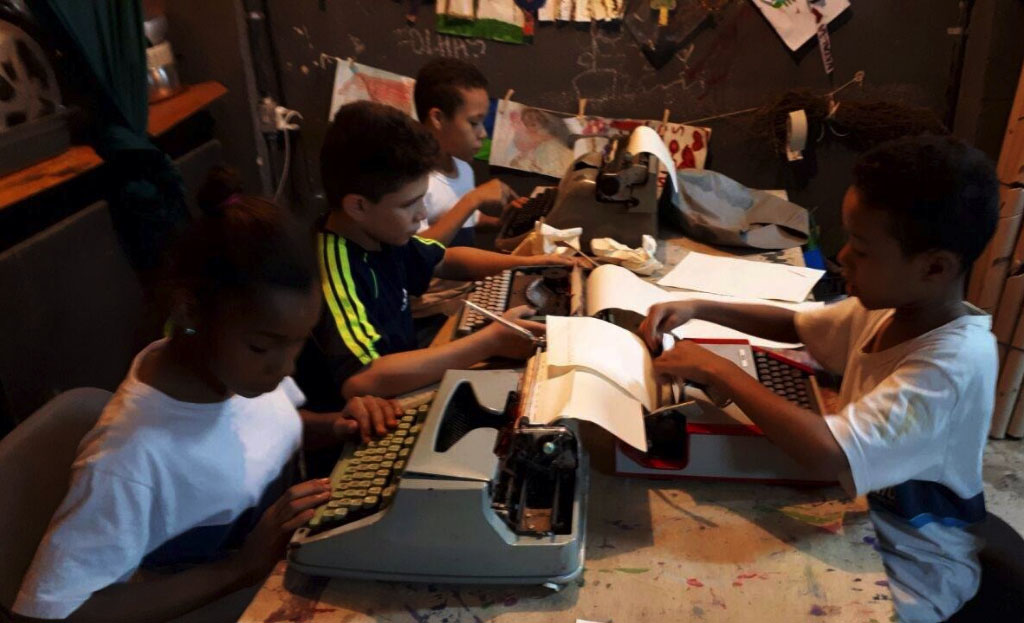
Fig 5. Lanchonete: Typing. Photo: Thelma Vilas Boas
In the study group “Aesthetic-political actions” led by the professors Jorge Vasconcelos, Mariana Pimentel and Marcia Bianchi, held every Friday at the Lanchonete in the second half of 2017, we discussed the theme of “giving or not giving presents” to the L <> L core group of 25 children.6 We concluded that it would be wonderful to give them presents, even though we did not agree with the commercialization of Christmas.
We are guided by the desire to please them and by a cultivated and sincere love. We gathered our resources and bought gifts for each of them, choosing something for each one according to their interests.
Thiago, Miguel, Junior, Samuel and Miguelzinho got rollerskates. Alexia, the youngest girl in the class, got speakers. The boys in love with football – Kauan, Kaique, Eduardo, Lohan, Matheus, Derik – received socks, boots and a ball. Rayane and Andriene got dolls. The teenagers – Buiú, Gabriel, Eduardo, Gustavo, Bruna, Brenda, Alexandra, Mariana, Nathalia – got headphones. Dona Natalice, the grandparent of three of the children, got a thermos. Maria, Miguel’s mother, a set of glasses for her new home.
Andriene’s father André volunteered to dress up as Santa Claus and deliver the presents to the children. There were fears that many children in the community who did not attend L <> L would emerge and be frustrated that they did not get gifts. We bought some souvenirs in the event that this happened. And it did. Some children we did not know came and were frustrated when they received presents that were different from the others, ones that were in truth much simpler than the others. The question was whether the distribution of gifts would end up weakening what we had so carefully gained over the preceding months, cultivating relationships and affections without any material reward.
There was also uncertainty as to the reproduction of such a commercial practice as “Santa Claus from Coca-Cola distributing gifts”, but it was a proposal of one of L <> L’s participants, the father of a child who is also involved, a resident of the community and involved in the management of local activities. It was perfectly legitimate to fulfill his wish.
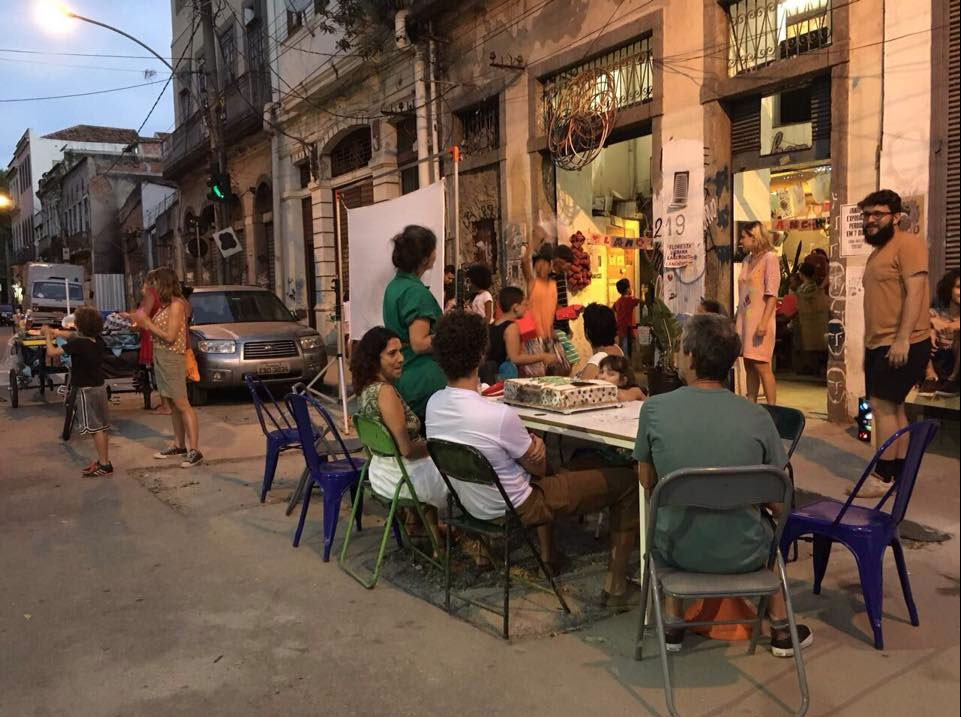
Fig 6. Lanchonete: On the sidewalk. Photo: Thelma Vilas Boas
Other particularities also arose with the distribution of gifts, and our (in) certainties snapped. Some children compared their presents with those of others. Some were frustrated to the point of sadness. Some bartered theirs right away. Others thanked us from their heart.
Finally the Christmas Party of the Lanconhete<> Lanconhete happened with an unforgettable dinner that was prepared by everyone throughout the week. Lamb shanks were baked in the wood oven of the [local] supermarket. The cake, made by André, who lives on top of Morro da Providencia, was delivered by one of the community taxi drivers. Izabela Pucu brought the panetone cakes, Marcelo bought grapes, Maria provided soft drinks, Roberto Somlo brought 20 roasted chickens, other friends contributed and we all enjoyed our little home Lunchonente<>Lunchonete in party mode.
We devoured with joy and hunger what we had to eat, we toasted what we had to drink, we ate the cake and we danced in the street with the children until late at night. It was the last day that we met in 2017 at the Lanchonete<>Lanchonete. It was the last day of a ten-month party!!
The fragments filmed during the Christmas party were recorded as my contribution to the art and care issue of MESA magazine. The above text is only introductory as it is rather the film that best presents the Lanchonete, its participants, the atmosphere, the children, the conflicts, and the party. Saracura manager Bianca Bernardo prepared the accompanying footnotes.
In January of 2018 the Lanchonete migrated to another address just two blocks from Saracura.
Here in the Gamboa neighborhood, known as Little Africa, there are several properties occupied by the homeless. One of these began over 40 years ago on Pedro Ernesto Street in a corner house that had been originally built in 1907, featuring a dwelling in the upper floor, handmade graphics studios occupying what had once been the backyard of the house and a bar downstairs.
In order to advance in the discussion about artistic practices and their responsibility in the construction of the social fabric, Lanchonete <> Lanchonete migrated to the bar of this occupation and has since developed a series of interventions in partnership with the local leadership, its participants, the community, children, artists, teachers, researchers and the world.
For more information see:
https://www.facebook.com/lanchonetelanchoneteocupacaobardelas
https://www.instagram.com/lanchonete.lanchonete/
[E.N The video is not sub-titled but offers an excellent visual lens onto the life of the Lanchonete and those involved]
Christmas party movie, Lanchonete<>Lanchonete, 2017.
***
Thelma Vilas Boas
Is an artist from São Paulo, a resident of Rio de Janeiro. She has a degree in pedagogy, and fine art photography from Sir John Cass College (London), speciality degrees in documentary cinema from FGV and art and philosophy from PUC RJ. Currently she is doing master’s in visual arts at EBA UFRJ and is a trainee teacher at the Universidade Federal Fluminense within the Institute of Art and Social Communication as well as being artist in resident at Espaço Saracura where she is running what has been baptized as the “Lunchonete” at Espaço Saracura.
__________
1 SARACURA is an independent art space founded by Bianca Bernardo, Cesar Jordão and Paula Borghi in 2016. It brings together artists, educators, architects, curators, researchers, independent producers, university professors, neighbors and the general public. It organizes art exhibitions, talks with artists, free publishing and distribution of publications, performance events, a residence program, architecture and urbanism meetings, free workshops and training courses, parties and musical performances. Located in an old townhouse on 219 Sacadura Cabral Street in the port region of Rio de Janeiro, Saracura is one of several historic buildings built at the beginning of the 20th century between 1900 and 1906 that occupy the frontier between the Morro de Providência favela and the sea, which at one time reached Sacadura Cabral St. The port area of Rio de Janeiro has undergone major changes in recent years, stimulated by the urgency of mega-events such as the 2016 Olympics that have brought about profound changes in the area’s urban fabric, such as the demolition of the flyway known as the Perimetral in the name of the renovation of the old warehouses and the creation of a pedestrian street called Olympic Boulevard. Unfortunately, the conservation and renovation proposals made by the municipal government in the “Porto Maravilha” (wonderful port) project – a which totaled around R $ 8 billion (approx 2 – 3 billion US dollars) in investments for 15 years – neglected the legacy of the region’s African heritage, marked by long years of slavery. The black history of this locality remains largely unknown, and its cultural apparatuses of memory and resistance do not receive the deserved attention of the state, and runs the constant risk of disappearance. For more information on Saracura: https://www.facebook.com/espacosaracura/
2 Capacete is a non-profit art and research space and organization open to the public. It promotes contemporary thinking through research residencies, workshops, seminars and weekly lectures. In existence for over 20 years CAPACETE has carried out numerous projects with national and international professionals in the city of Rio de Janeiro, in other cities of Brazil, and abroad. For more information: http://capacete.org/
3 The 1 # Artistic Residence of SARACURA took place from July 5 to August 19, 2016. The RFP call selected 2 artists living in Rio de Janeiro – Ana Matheus Abbade and Thelma Vilas Boas and 1 artist from another city, Cleverson Salvaro. It was a pilot residence, autonomous and non-profit, encouraging the artistic exchange of different contexts and regions. The RFP call was intended exclusively for Latin American visual artists ranging from 21 to 80 years old. The selection was made by two invited curators (Marcio Harum and Ricardo Resende) and Saracura’s managing directors (Bianca Bernardo, Cesar Jordão and Paula Borghi).
4 Brazilian black thinker and feminist Lélia Gonzalez has reflected on the ways in which dominant language is often used to construct spaces of power, preventing the practice of a transgressive education. She named the language spoken by African black people enslaved in Brazil as “pre-Portuguese.” Disobedience to the rules of normative grammar is a mark of her writing, which proposes a radical decolonization of hegemonic knowledge.
5 Paula Borghi, (1986, São Paulo). Since 2010 Borghi has been researching contemporary art in Latin America. She is the creator of the MULTIPLO Project, a traveling platform of printed art (books, postcards, newspapers and magazines), which has been in Cuba, Chile, Ecuador, Argentina and some cities in Brazil. She was assistant curator of the 12 # Bienal de La Havana (2015) and curator of the Red Bull Station’s Artistic Residence (20013/2014). She was a member of the critics group of Paço das Artes 2012/2011 and of the critics group of Centro Cultural São Paulo 2011/2012/2013. Recently worked with the Goethe Institute in the Games of the South project, on the occasion of the 2016 Olympics. She was awarded a Rumos Itaú Cultural 2016 grant for the MULTIPLO project.
Bianca Bernardo (1982, Rio de Janeiro) has an undergraduate degree in fine arts and a masters in art from the State University of Rio de Janeiro (UERJ). Since 2010 she has been researching art, education and health practices. She was a member of the Experimental Nucleus of Education and Art of MAM-Rio (2011-2013) and education manager of the Bispo do Rosário Museum of Contemporary Art (2013-2017). In 2016 she presented a training program for educators at the National Museum of Las Cultures in Mexico City. In partnership with SESC, she developed the pedagogical game Caixa dos Escolhidos [Box of Chosen Ones] and the educational exhibition O Grande Veleiro [The Great Sailboat], currently in circulation. She coordinated projects for public schools between 2013 and 2017, publishing the books O Museu que Nós Queremos [The Museum We Want] and Merendeira Cor-de-Rosa: Rumo à Expedição! [Pink Lunch Box: Towards the Expedition!]. In 2017, together with her son she performed at the Hyde Park Art Center in Chicago (USA), as part of the project The Studio of Us, continuing her research on art and co-creation.
Cesar Jordão, (1983, Rio de Janeiro) is an urbanist architect trained by FAU UFRJ (2008) and a masters in urbanism from PROURB (2015). He has professional experience in medium to large size architectural firms working with projects in different scales and multidisciplinary purposes. He has participated in urban research groups and developed initiatives in the area of furniture and digital manufacturing processes. Currently, he is dedicated to his own architectural projects.
6 The course and discipline “Artistic Processes” is part of the Postgraduate Program in Contemporary Studies in the Arts (PPGCA) at UFF (Federal Fluminense University) and took place in the second semester of 2017. Drawing on the ideas and forces that guide aesthetic-political practices in contemporary art, we questioned: how to realize “aesthetic-political actions”? The conversations / encounters took place mainly at SARACURA in the Lanchonete<>Lanchonete. These actions were to take place in what is one most gentrified region of the City of Rio de Janeiro and precisely for this reason [the professors] choose a space that operates both within art and local sociabilities, disconnected from consecrated artistic geopolitics, in order to problematize the spectacular and expropriating urban operations witnessed in Rio de Janeiro. We explored the idea of hospitality as the modus operandi of insistence / resistance. It is interesting to open up one’s doors, literally to the “ground floor” for people who, as Michel de Certeau called them, are the “ordinary practitioners” of the city or the “slow men” of [the Brazilian geographer] Milton Santos.



